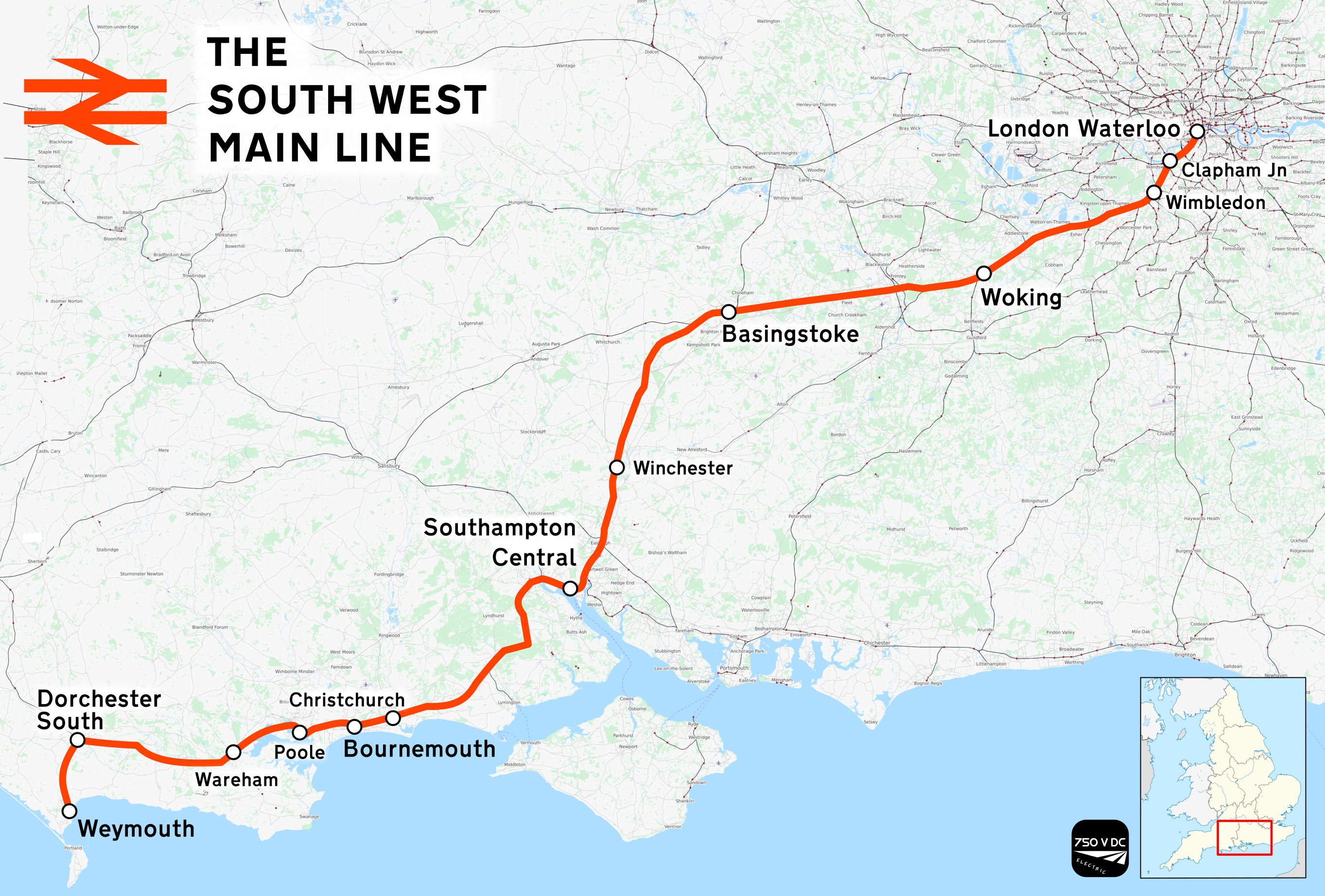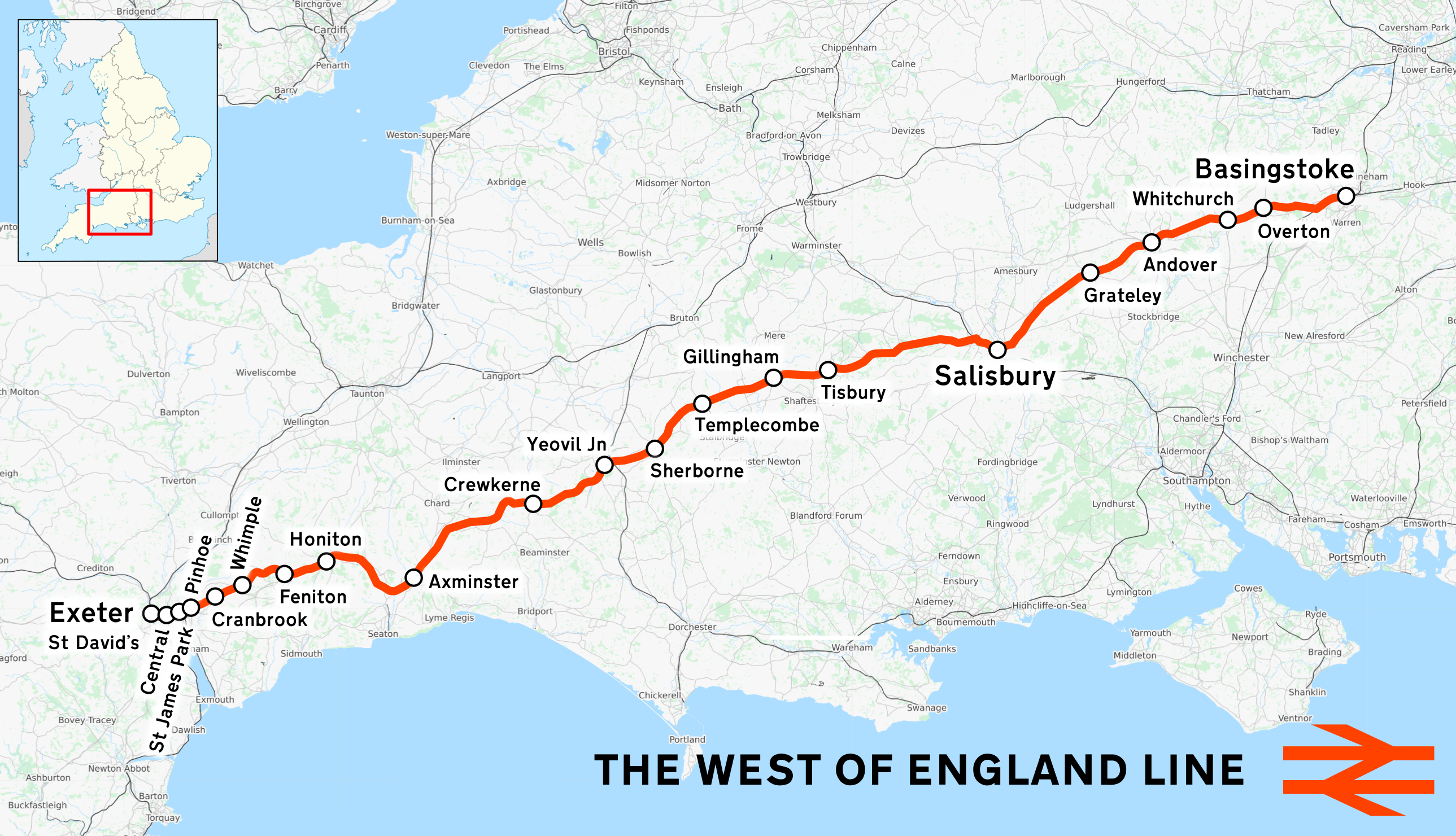|
South West Main Line Route Utilisation Strategy
The South West Main Line Route Utilisation Strategy (SWML RUS) was the first Route Utilisation Strategy (RUS) to be produced under the new Network Rail regime. As such it did not completely adhere to the format that has subsequently become 'standard', and needs to be read in conjunction with the prior Draft for Consultation. It was published in May 2006 and was included in a map published by the Office of Rail Regulation as established in May 2007. For this purpose the South West Main Line covers not only the whole of Network Rail's Route 3 - (with the exception of the Isle of Wight line), but also significant parts of Route 4 - Wessex, specifical ... [...More Info...] [...Related Items...] OR: [Wikipedia] [Google] [Baidu] |
Network Rail
Network Rail Limited is the owner (via its subsidiary Network Rail Infrastructure Limited, which was known as Railtrack plc before 2002) and railway infrastructure manager, infrastructure manager of most of the railway network in Great Britain. Network Rail is a non-departmental public body of the Department for Transport with no shareholders, which reinvests its income in the railways. Network Rail's main customers are the private train operating company, train operating companies (TOCs), responsible for passenger transport, and freight operating company, freight operating companies (FOCs), who provide train services on the infrastructure that the company owns and maintains. Since 1 September 2014, Network Rail has been classified as a "public sector body". To cope with history of rail transport in Great Britain 1995 to date, rapidly increasing passenger numbers, () Network Rail has been undertaking a £38 billion History of rail transport in Great Britain 1995 to date#Timelin ... [...More Info...] [...Related Items...] OR: [Wikipedia] [Google] [Baidu] |
Office Of Rail Regulation
The Office of Rail and Road (ORR) is a non-ministerial government department responsible for the economic and safety regulation of Britain's railways, and the economic monitoring of National Highways. ORR regulates Network Rail by setting its activities and funding requirements for each Control Period, ensuring train operators have fair access to the railway network, and enforcing compliance with its network licence. ORR also regulates High Speed 1, the Channel Tunnel, and also acts as the appeal body, controls the network statement and monitors the competitive situation of rail services in Northern Ireland. It is the competition authority for the railways and enforces consumer protection law in relation to the railways. From April 2015, ORR assumed responsibility for monitoring National Highways' management of the strategic road network – the motorways and main 'A' roads in England – and advising the Secretary of State for Transport on the levels of funding and performanc ... [...More Info...] [...Related Items...] OR: [Wikipedia] [Google] [Baidu] |
South West Main Line
The South West Main Line (SWML) is a 143-mile (230 km) major railway line between Waterloo station in central London and Weymouth on the south coast of England. A predominantly passenger line, it serves many commuter areas including south western suburbs of London and the conurbations based on Southampton and Bournemouth. It runs through the counties of Surrey, Hampshire and Dorset. It forms the core of the network built by the London and South Western Railway, today mostly operated by South Western Railway. Operating speeds on much of the line are relatively high, with large stretches cleared for up to running. The line has four tracks for most of the length between Waterloo and Worting Junction, south west of , from which point most of the line is double track. A couple of miles from the Waterloo terminus, the line runs briefly alongside the Brighton Main Line west branch out of , including through – the busiest station in Europe by railway traffic. The oldest part of ... [...More Info...] [...Related Items...] OR: [Wikipedia] [Google] [Baidu] |
West Of England Main Line
The West of England line (also known as the West of England Main Line) is a British railway line from , Hampshire, to in Devon, England. Passenger services run between London Waterloo station and Exeter; the line intersects with the Wessex Main Line at . Despite its historic title, it is not today's principal route from London to the West of England: Exeter can be reached more quickly from London Paddington via the Reading–Taunton line, with this route providing the only direct route to destinations west of Exeter. History Once all sections had been incorporated into the London and South Western Railway, the sections and branches were: * Basingstoke to Salisbury ** Basingstoke to Andover, Hampshire, Andover, opened 3 July 1854 ** Andover to Salisbury, opened 1 May 1857 ** Branches: ***''Basingstoke and Alton Light Railway'' opened June 1901, closed 30 May 1936 *** From Hurstbourne railway station, Hurstbourne and Andover, Hampshire, Andover to Romsey and on to Eastleigh a ... [...More Info...] [...Related Items...] OR: [Wikipedia] [Google] [Baidu] |
Reading To Basingstoke Line
Reading is the process of taking in the sense or meaning of symbols, often specifically those of a written language, by means of sight or touch. For educators and researchers, reading is a multifaceted process involving such areas as word recognition, orthography (spelling), alphabetics, phonics, phonemic awareness, vocabulary, comprehension, fluency, and motivation. Other types of reading and writing, such as pictograms (e.g., a hazard symbol and an emoji), are not based on speech-based writing systems. The common link is the interpretation of symbols to extract the meaning from the visual notations or tactile signals (as in the case of braille). Overview Reading is generally an individual activity, done silently, although on occasion a person reads out loud for other listeners; or reads aloud for one's own use, for better comprehension. Before the reintroduction of separated text (spaces between words) in the late Middle Ages, the ability to read silently was consid ... [...More Info...] [...Related Items...] OR: [Wikipedia] [Google] [Baidu] |
Great Western Main Line
The Great Western Main Line (GWML) is a main line railway in England that runs between London Paddington and . It connects to other main lines such as those from Reading to Penzance and Swindon to Swansea. The GWML is presently a part of the national rail system managed by Network Rail, while the majority of passenger services upon it are provided by the current Great Western Railway franchise. The GWML was built by the original Great Western Railway company between 1838 and 1841, as a dual track line in the broad gauge. The broad gauge remained in use until 1892, after which standard gauge track has been exclusively used. Between 1877 and 1932, many sections of the GWML were widened to four tracks. During 1908, Automatic Train Control (ATC) was introduced as a safety measure. In 1948, the Great Western Railway, and thus the GWML, was merged into the Western Region of British Railways. During the 1970s, the GWML was upgraded to support higher line speeds, as a result o ... [...More Info...] [...Related Items...] OR: [Wikipedia] [Google] [Baidu] |
Loading Gauge
A loading gauge is a diagram or physical structure that defines the maximum height and width dimensions in railway vehicles and their loads. Their purpose is to ensure that rail vehicles can pass safely through tunnels and under bridges, and keep clear of platforms, trackside buildings and structures. Classification systems vary between different countries, and loading gauges may vary across a network, even if the track gauge is uniform. The term loading gauge can also be applied to the maximum size of road vehicles in relation to tunnels, overpasses and bridges, and doors into automobile repair shops, bus garages, filling stations, residential garages, multi-storey car parks and warehouses. A related but separate gauge is the structure gauge, which sets limits to the extent that bridges, tunnels and other infrastructure can encroach on rail vehicles. The difference between these two gauges is called the clearance. The specified amount of clearance makes allowance for ... [...More Info...] [...Related Items...] OR: [Wikipedia] [Google] [Baidu] |





